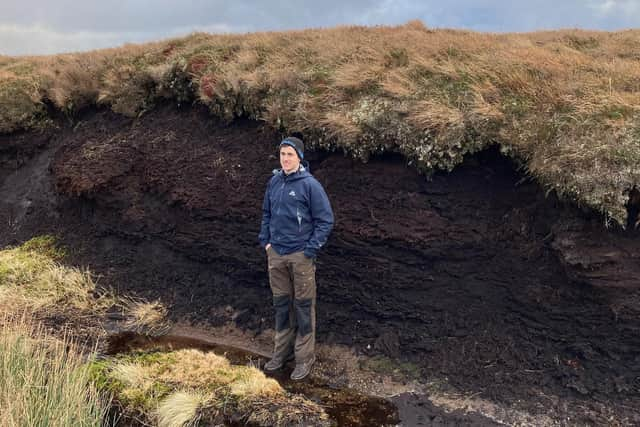Scotland tipped to benefit from carbon market boom predicted as firms seek ‘home-grown’ nature solutions to offset emissions
Property experts are forecasting a 40-fold increase in the carbon credit market – where investment in environmentally beneficial projects is used to offset greenhouse gas emissions – over the next eight years.
In a new report, property consultancy Bidwells suggests businesses struggling to fully decarbonise at source will increasingly be forced to rely on such schemes to neutralise ‘residual’ emissions and achieve Scottish and UK net-zero targets by 2045 and 2050.
Advertisement
Hide AdAdvertisement
Hide AdBidwells says the UK currently cannot produce enough carbon credits to fulfil demand, but greater provision must be created urgently.


As part of this they are expecting a massive surge in demand for land in the UK which can provide “home-grown” nature-based solutions for removing and locking up carbon.
And Scotland is prime territory for such initiatives, with peat covering around 23 per cent of the total land area.
We are already seeing a glimpse into the future of how ‘carbon capture’ potential is driving up land prices north of the border as buyers rush to snap up sites that can be used to plant trees or where peatlands need restored.
The value of areas planted with commercial forestry has been rising steadily over the past five years, but recently there has been a significant increase in demand for rougher hill ground, traditionally considered to have limited uses.
The report suggests other ecosystems such as agricultural soils, salt marshes and seagrass meadows will also be used to generate credits in the future.
Creation of new forests, bringing peat bogs back to health and other efforts to restore nature beneficial moves for the environment, increasing carbon sequestration, boosting biodiversity and improving flood defences.
But they can also benefit local communities, according to Bidwells, improving surroundings and providing skilled jobs.
Advertisement
Hide AdAdvertisement
Hide AdWe just have to be sure that carbon offsetting schemes do not represent a ‘get out of jail free’ card for the biggest and richest climate polluters, allowing them to carry on as usual and pay their way out of trouble.
A message from the Editor:
Thank you for reading this article. We’re more reliant on your support than ever as the shift in consumer habits brought about by coronavirus impacts our advertisers.
If you haven’t already, please consider supporting our trusted, fact-checked journalism by taking out a digital subscription.
Comments
Want to join the conversation? Please or to comment on this article.
